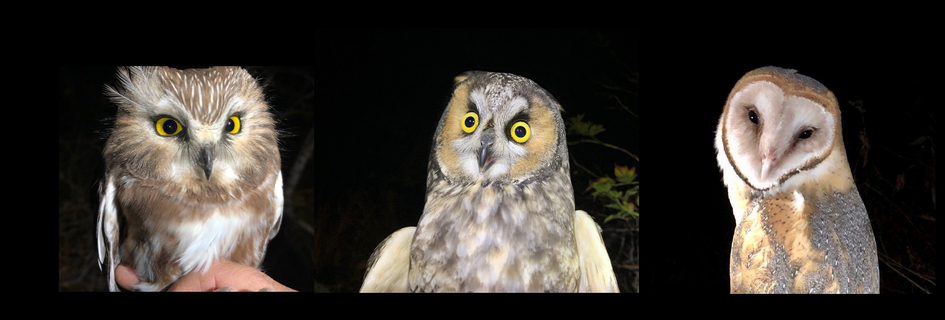Be a Better Birder: Owls: Birds of Mystery and Superpowers presented by Jannaca Chick
by ROCKY POINT BIRD OBSERVATORY SOCIETYSaturday, 14 September 2024 from 9:30 AM (ADT) to 1:30 PM (ADT)Outerbridge Park, 1181 Royal Oak Drive, access via Blenkinsop Road V8X 3T7 , , BCTicket Information
Ticket sales for this event are now closed.
Overview
Join Jannaca Chick to learn about owls and their superpowers, and the owl species found on Vancouver Island.
Owls live on every continent except Antarctica and can be found in every type of environment: tropical and boreal forests, desert, grasslands, mountains, arctic tundra, and cities. Being mainly nocturnal, cryptic birds, owls can be difficult to find as well as study. They have developed "superpowers" that allow them to fly silently and be extremely effective hunters.
In this course we will discuss their unique morphology and teach you how to identify the owl species most commonly found on on southern Vancouver Island by sight and sound. You will learn about their behaviours, including hunting, nesting, territoriality, and migration. We will also show you how RPBO’s Nocturnal Owl Project has captured, documented, banded, and released more than 15,000 owls since 2002.
Details
This event supports our campaign to increase the use and impact of data collected by RPBO over nearly 30 years of operation.
The morning class will take place at the community building in Outerbridge Park, accessed from Blenkinsop Road. The gate will be open, allowing you to park beside the building. RPBO volunteers will be on hand to greet you and begin the class at 9:30 am. We expect the classroom time to be between three and four hours.
The field trip portion of this workshop will take place at the owl banding station at Peddar Bay, on a different day. We will have schedule options to discuss with you and will help you to plan your visit to the station.
Please note that the community building is rustic. The building is heated, but does not provide an indoor bathroom. There is a port-a-potty behind the building.
Please bring a snack to enjoy during break time. We are able to make instant coffee and tea in the building. Plan to take the opportunity to explore beautiful Outerbridge Park.
This property (3.8 ha (9.3 acre)) was owned by Mrs. Outerbridge from the late 80s to 2005. She spent these years creating gardens, ponds and landscape features to create an oasis for wildlife, particularly birds. For many years the property was known locally as the ‘Shangri-La Bird and Nature Sanctuary’ and was open to the public. Mrs. Outerbridge offered to sell the property to Saanich with the understanding that the park would be kept as a bird and nature sanctuary, and in 2005 it became a park. A wide variety of native and ornamental plants can be seen in formal and naturalistic settings; many are chosen for the food and shelter they offer birds.
RPBO has compiled a list of birds you might encounter while visiting the park, see: http://rpbo.org/outerbridge_park.pdf.
